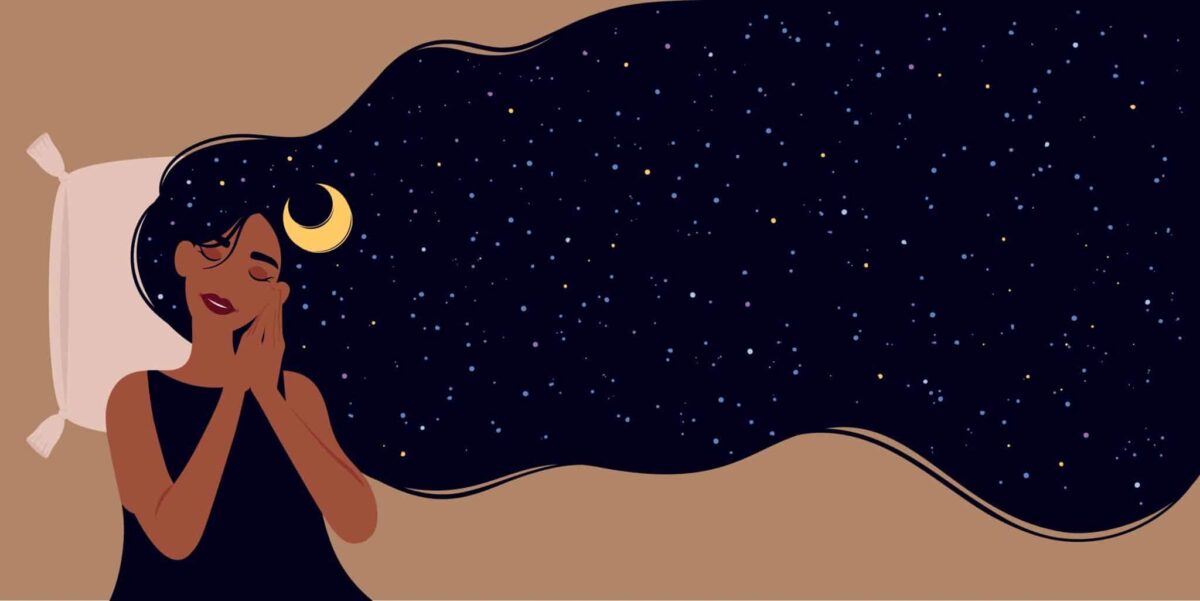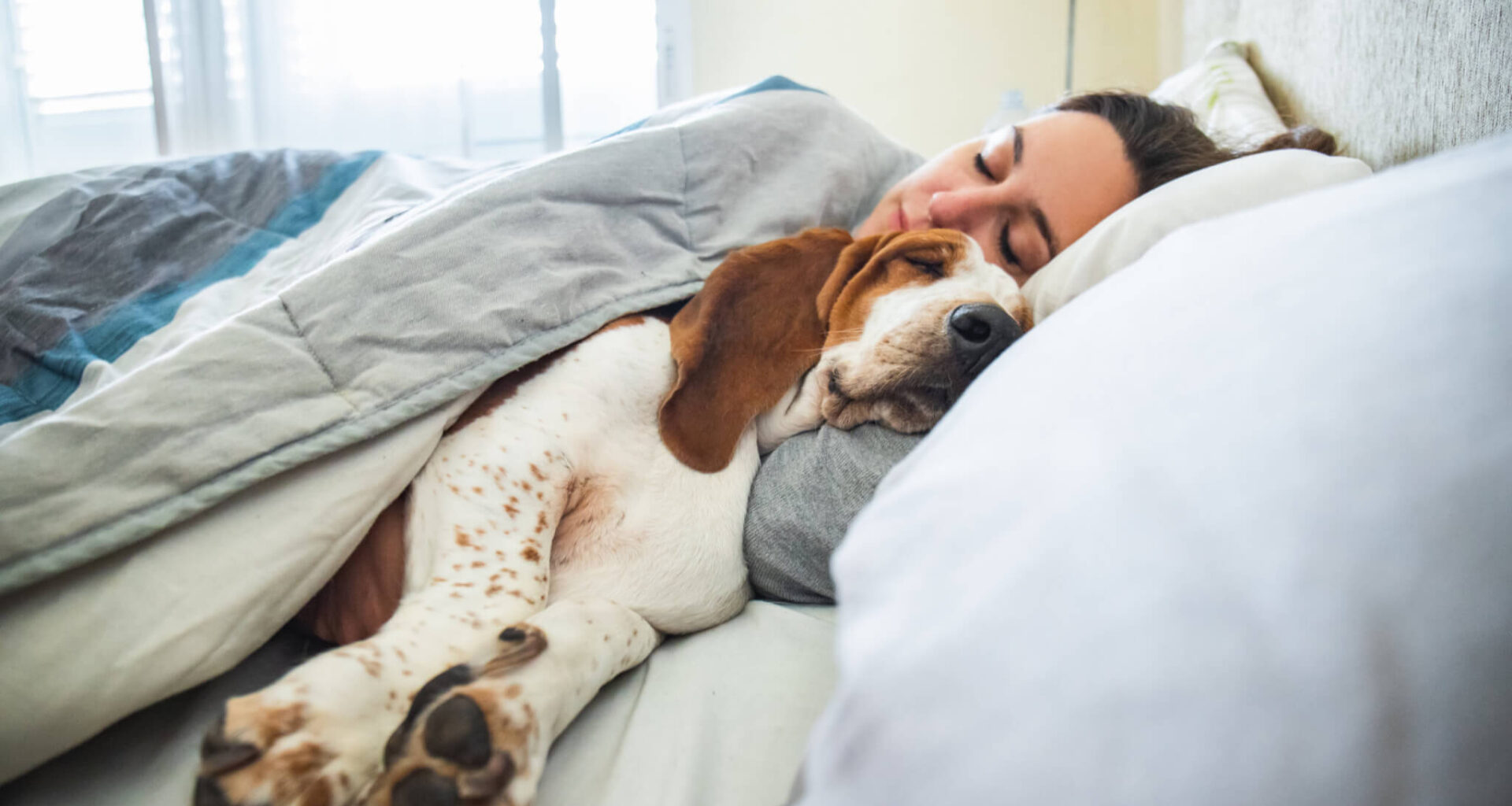
Dreams often fade away when we wake up. Enter the world’s largest dream database. (© Daniel Rodriguez – stock.adobe.com)
In A Nutshell
- The DREAM database pools 2,643 sleep recordings from 505 people across 20 studies, creating the world’s largest collection of brain activity data paired with dream reports.
- Dreams aren’t just a REM sleep phenomenon. Analysis revealed dream reports occurred 88% of the time in light sleep, 56% in moderate sleep, 48% in deep sleep, and 81% during REM sleep.
- Researchers can predict dreaming from brain waves alone with up to 70% accuracy in REM sleep, suggesting objective markers of subjective dream experiences exist in measurable brain activity.
- The database remains open to new contributions and could help answer fundamental questions about consciousness, from why some people rarely remember dreams to detecting awareness in unresponsive patients.
Scientists have assembled the largest collection of dream data ever created, pooling more than 2,600 sleep recordings from 505 people across 20 different studies. The Dream EEG and Mentation (DREAM) database offers an exciting new approach to studying one of neuroscience’s most elusive puzzles: what happens in our brains when we dream?
For decades, dream research has been hampered by a fundamental problem. Sleep studies require expensive equipment, trained technicians, and participants willing to spend nights in laboratories while being repeatedly awakened. Most research groups could afford to collect only dozens of observations, making it difficult to draw reliable conclusions about the sleeping brain.
Published in Nature Communications, the DREAM database changes that equation. By standardizing data from institutions worldwide and making it openly accessible, researchers have created a resource that no single laboratory could build alone. Each recording captures both the electrical activity of a sleeping brain and detailed reports of what the person experienced upon waking.
Creating a Common Language for Dream Research
One major obstacle the project addressed was inconsistency across laboratories. Different research groups used different methods to collect and categorize dreams. Some studies relied on detailed questionnaires, others collected free-form verbal descriptions, and many employed different definitions of what counts as a dream.
The database introduced three standardized categories. “Experience” indicates the person recalled specific dream content. “Experience without recall” captures the phenomenon of knowing you dreamed but being unable to remember details, sometimes called white dreams. “No experience” means the person reported neither dreams nor any impression of having dreamed.
This common framework allows researchers to combine observations from studies that might have seemed incompatible. A lab studying nightmares in patients with PTSD can now compare their data with findings from healthy volunteers learning spatial tasks, or from experiments on lucid dreaming.
Two Decades of Sleep Data in One Place
The DREAM database spans studies conducted from the early 2000s through 2024, encompassing diverse experimental designs. Some datasets come from multiple awakenings throughout single nights. Others capture morning reports after full nights of sleep. Several studies recorded daytime naps. One unique dataset includes simultaneous EEG and magnetoencephalography, offering complementary views of brain activity.
Participant demographics range widely. The youngest were children aged 9-14 with developmental dyslexia or matched controls. The oldest were healthy adults in their sixties and seventies. Some studies focused on frequent sleep talkers, others on people trained to signal lucid dreams through eye movements.
Analysis of 1,550 awakenings with complete sleep stage and dream report data revealed clear patterns. Stage N1, the lightest non-REM stage, produced dream reports 88% of the time. Stage N2 yielded dreams in 56% of awakenings. Deep sleep dropped to 48% dream recall. REM sleep generated dream reports 81% of the time.

Dreams occur during multiple stages of slumber, not just REM sleep. (Credit: Oliga on Shutterstock)
These numbers confirm what many sleep researchers suspected but struggled to prove: dreams are not exclusive to REM sleep. Reports of conscious experiences accompanied about 40-60% of non-REM awakenings, depending on sleep depth and time of night.
Quality Standards Enable Global Collaboration
Contributing a dataset required meeting specific technical benchmarks. Recordings needed at least two EEG electrodes positioned according to standard placement systems, a minimum of 20 seconds of continuous sleep before awakening, and sampling rates of at least 100 Hz. Data had to be in raw or minimally preprocessed form.
Each dataset underwent both automated and manual quality checks. Curators verified proper file structure, correct data formatting, and consistency in metadata. Sleep recordings with more than 10 seconds of artifacts in the final 20 seconds before awakening were excluded.
The database stores polysomnography data in European Data Format files, with each file containing the brain activity leading up to a dream report. Metadata for each awakening includes the dream classification, sleep stage, participant demographics when available, and experimental conditions.
Contributors retain control over access levels for their data. Some datasets are fully open access. Others require researchers to request permission from the original authors, depending on what ethics committees approved for each study.
Early Findings Point to Objective Dream Markers
To demonstrate the resource’s potential, the research team conducted several analyses. They applied automatic sleep scoring algorithms to six datasets that met strict quality criteria, achieving accuracy above 72% compared to human expert scoring.
The algorithms generated probability distributions across possible sleep stages rather than single labels. Analysis of these probabilities showed that brain activity during non-REM sleep with dream reports carried higher probability of wake-like patterns compared to non-REM sleep without dreams.
The team also tested whether they could predict dream experiences from brain wave patterns alone. Using both traditional frequency analysis and advanced techniques designed to capture complex signals, they distinguished dreaming from non-dreaming states with better-than-chance accuracy in both REM and non-REM sleep. For REM sleep, the most sophisticated analysis reached 70% accuracy.
These preliminary results suggest objective markers of subjective dream experiences exist in measurable brain activity. The database provides the scale needed to identify such markers reliably.
Questions the Database Could Help Answer
The research team outlined several fundamental questions that the expanding database might address. Why are we sometimes conscious and sometimes unconscious during sleep? Why do some people remember dreams every day while others rarely recall them? What makes the small percentage of people who regularly have lucid dreams different from the rest?
Sleep research also connects to broader questions about consciousness in other states. Patients diagnosed with unresponsive wakefulness syndrome cannot provide behavioral reports, making it difficult to determine whether they experience awareness. Similarly, determining the depth of general anesthesia needed to prevent intraoperative awareness remains a challenge. Some patients who experience awareness during surgery describe it as similar to dreaming.
The database could serve as a testing ground for methods to detect consciousness in the absence of reports. Techniques validated on sleeping, dreaming brains might transfer to these other conditions.
A Resource Built to Grow
The DREAM database remains open to new contributions and will continue expanding. The core team, drawn from institutions in Australia, France, Sweden, the United Kingdom, and elsewhere, maintains the collection on a voluntary basis.
Researchers can search and browse metadata without downloading large data files, making it easier to identify relevant recordings for specific research questions. The standardized format allows automated analysis pipelines to process data from multiple studies without extensive reformatting.
The project aligns with a broader movement toward data sharing in neuroscience. Similar collaborative databases have accelerated progress in other fields, from the Allen Institute for Brain Science to the Stanford Center for Reproducible Neuroscience. Until this project, dream research lacked a comparable resource.
The initial release of 2,643 awakenings represents a starting point. As more research groups contribute their recordings, the database will grow in both size and diversity, potentially transforming how scientists study the sleeping, dreaming brain.
Paper Summary
Methodology
The DREAM database aggregates polysomnography recordings and dream reports from 20 separate studies contributed by research institutions worldwide. Each included awakening consists of sleep EEG/MEG recording (minimum 20 seconds, 100 Hz sampling, 2+ electrodes) up to the moment of waking, plus a standardized classification of the reported experience. Contributors mapped their original dream categorization systems to three standard classifications: “Experience” (recalled specific content), “Experience without recall” (impression of dreaming without remembered details), and “No experience” (no dream reported or impression of dreaming). The initial release contains 2,643 awakenings from 505 participants. For analysis, researchers selected six datasets meeting quality criteria and extracted power spectral density features plus catch22 time-series features from three common electrodes (F4, C4, O2). Classification models attempted to discriminate “Experience” from “No experience” reports within NREM and REM sleep separately using cross-validation.
Results
The database confirmed dependence between sleep stage and dream experience with high statistical significance (chi-squared test, p
Limitations
Dream reports depend on waking participants, which interrupts sleep and may be affected by sleep inertia, confusion, and memory decay. Report quality and comprehensiveness diminish with time. The database aggregates studies with methodological and conceptual variability in experimental protocols, awakening procedures, and original dream categorization schemes. Not all contributed datasets provided identical metadata or raw dream report text. Some datasets required reclassification or mapping to standard categories, which introduces potential inconsistencies. The prediction analysis used only six datasets meeting strict equipment and demographic criteria, excluding studies with non-standard EEG systems, sensory stimulation protocols, or participants outside typical adult age ranges. Analysis focused on a limited number of electrode positions common across studies rather than full high-density recordings. Manual sleep scoring sometimes labels epochs as “Wake” before participants report being asleep, representing subjective-objective discrepancies that complicate interpretation.
Funding and Disclosures
Contributors W.W. and N.T. received support from the National Health Medical Research Council (APP1183280) and Japan Society for the Promotion of Science Grant-in-Aid for Transformative Research Areas (23H04829, 23H04830). J.W., T.A., and N.T. received support from the Australian Research Council (DP240102680). G.B., V.E., D.B., M.B., and G.A. received support from BIAL Foundation Grant #091/2020. Open access funding was provided by University of Skövde. The authors declare no competing interests.
Publication Information
Wong, W., Herzog, R., Andrade, K.C., et al. (2025). A dream EEG and mentation database. Nature Communications, 16, 7495. doi:10.1038/s41467-025-61945-1. Published online August 13, 2025. The paper reports work approved by Monash University Human Research Ethics Committee (Project ID 31269), with contributing studies receiving approval from their respective institutional ethics committees and obtaining participant informed consent for data sharing.
